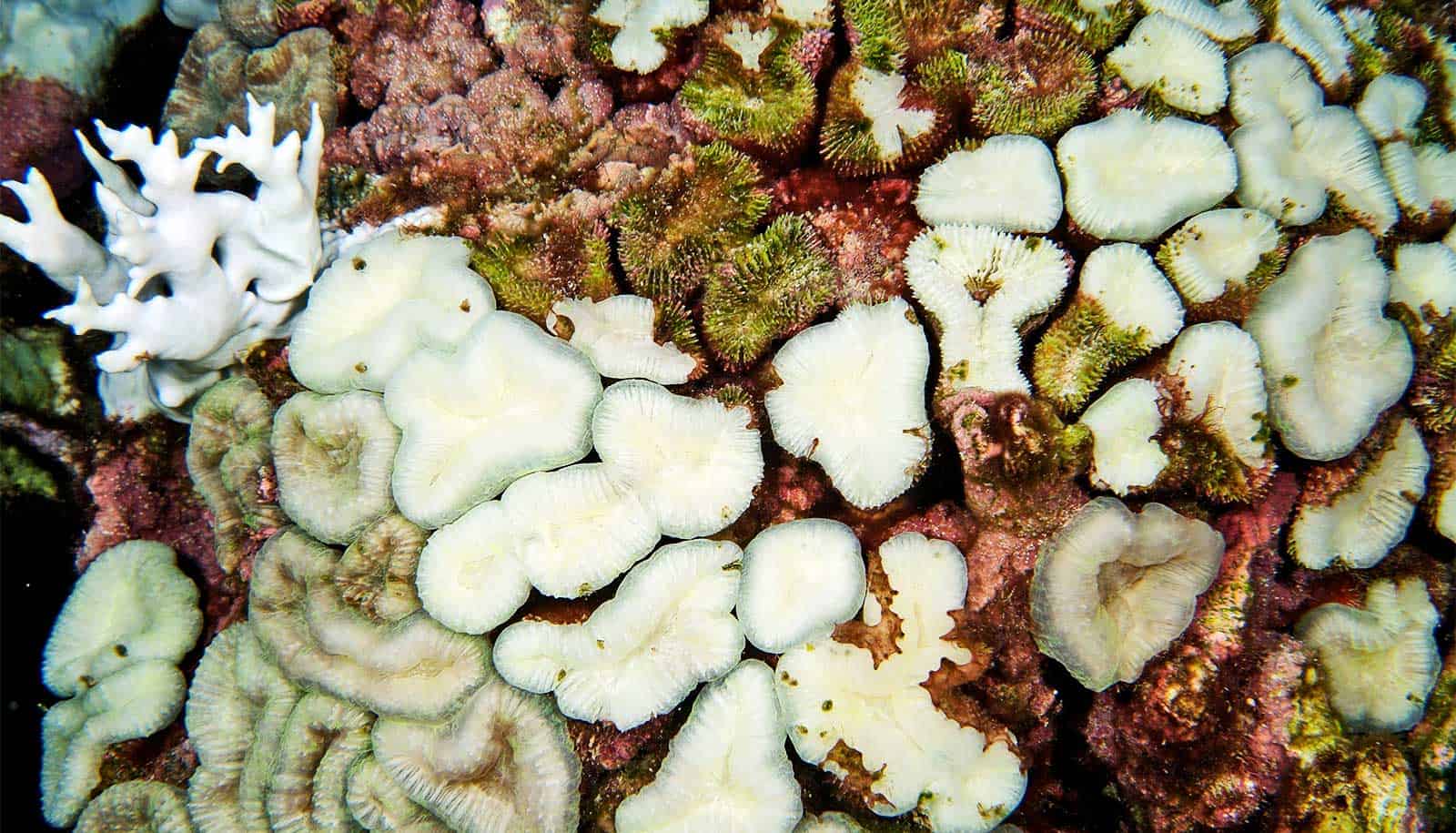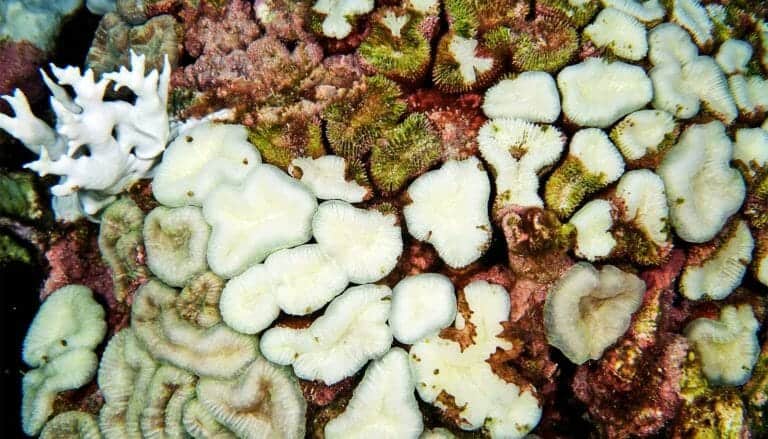Photo: This colony of Spiny Flower Coral (Mussa angulosa) shows sections that are partially bleached, completely bleached, and even some dead sections already overgrown with algae. A bleached Fire Coral stands alongside. (Credit: Joyce & Frank Burek/NOAA Flower Garden Banks National Marine Sanctuary)
Researchers may have solved the mystery of what caused the death of the large and colorful reefs about 100 miles from the Galveston coast 3 years ago.
Considered some of the healthiest coral reefs remaining in the Caribbean and Gulf of Mexico, the large and colorful reefs at the Flower Garden Banks National Marine Sanctuary grow on top of shallow, submerged banks in otherwise deep water.
As reported in Coral Reefs, researchers found that two separate processes caused hypoxia on the reef, leading to the die-off: the transport of freshwater runoff from the Mississippi, Atchafalaya, and Brazos Rivers, and an upwelling of deep, dense water onto the reef.
“We believe the combination of two different processes— river runoff and upwelling—caused localized hypoxia that killed invertebrates on the reef,” says Katie Shamberger, a researcher in the oceanography department at Texas A&M University. “In other words, both processes happened simultaneously to cause hypoxia and one of them alone may not have caused any trouble.”
Blocked sunlight
The first process, river runoff that flowed offshore, was most likely water from the Mississippi-Atchafalaya Rivers, but about one-fifth of the water was from Texas rivers, Shamberger says.
These waters made it out […]
Full article: Double whammy killed coral reefs off Texas coast



